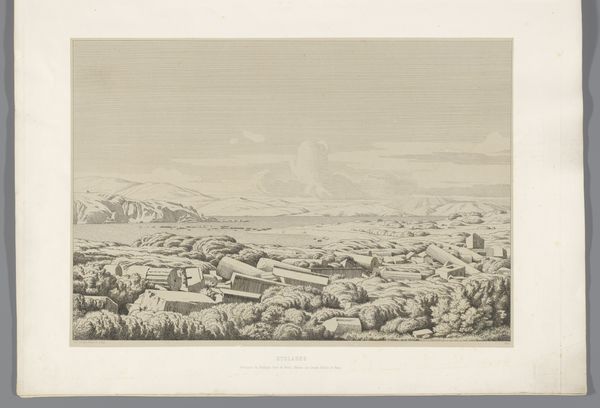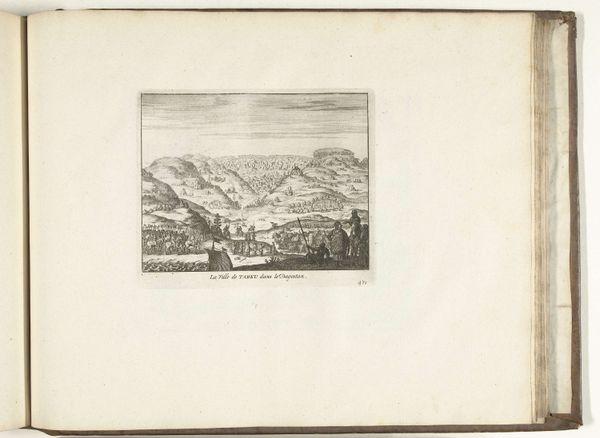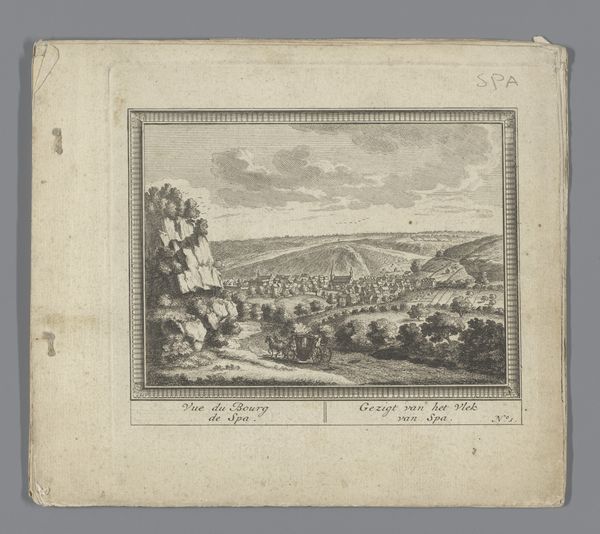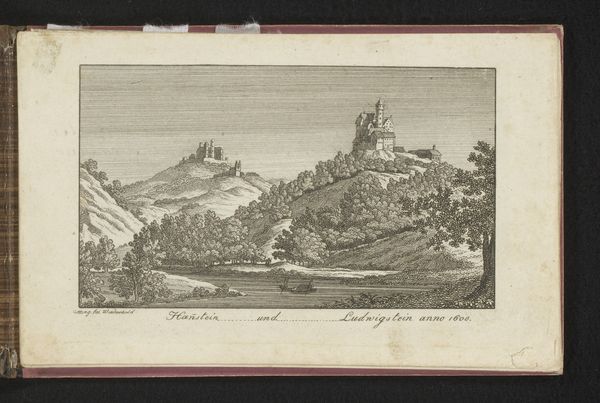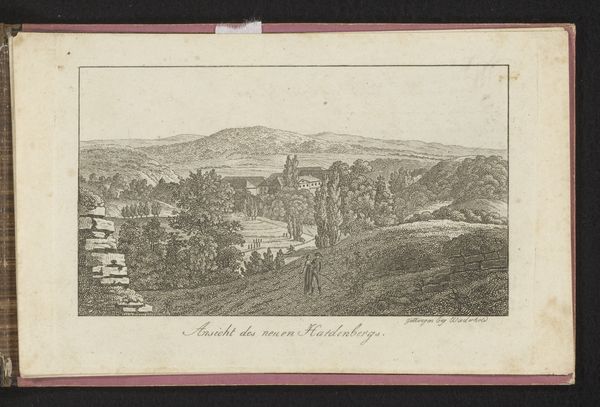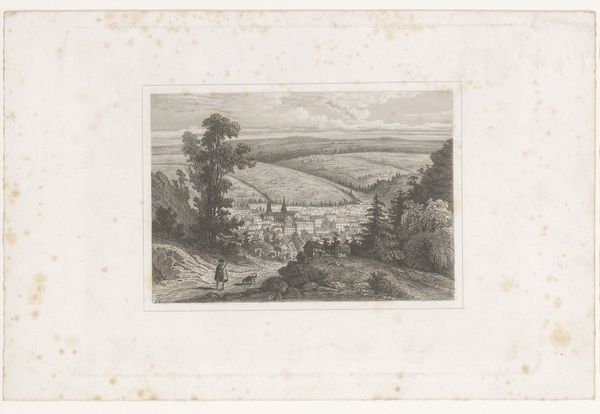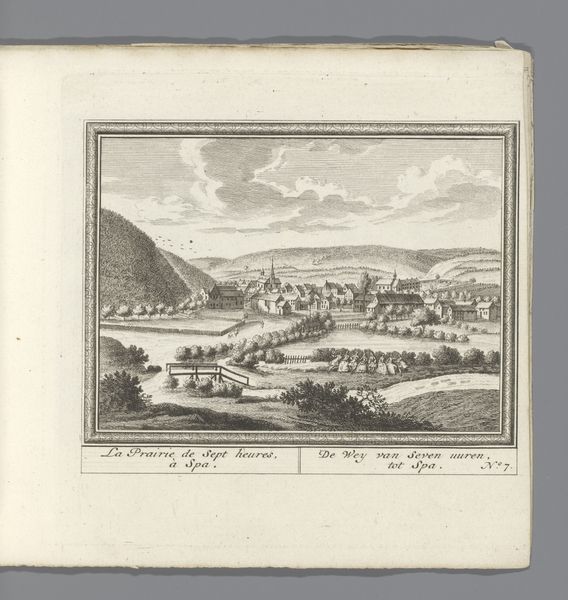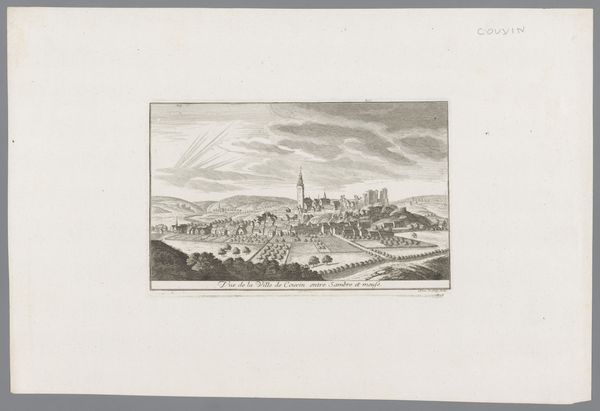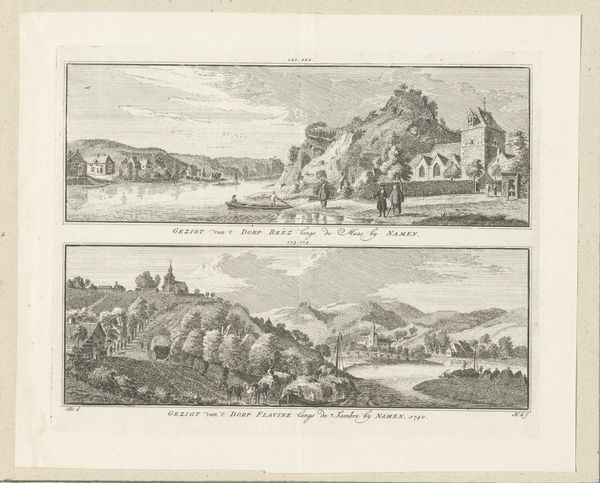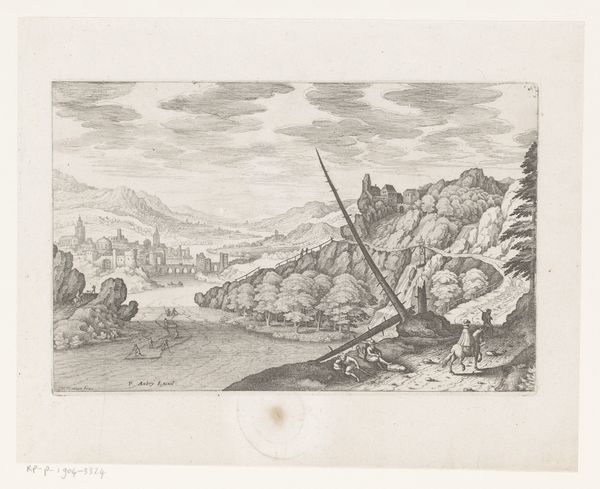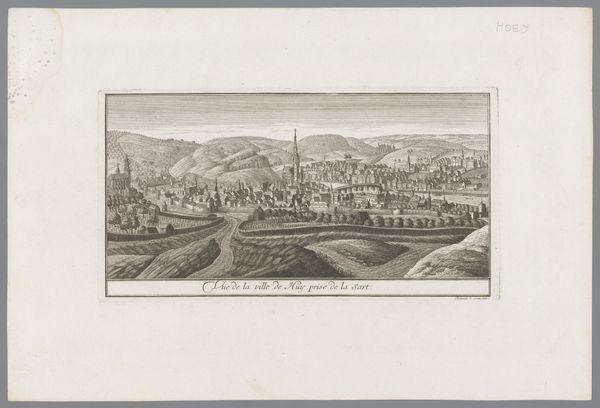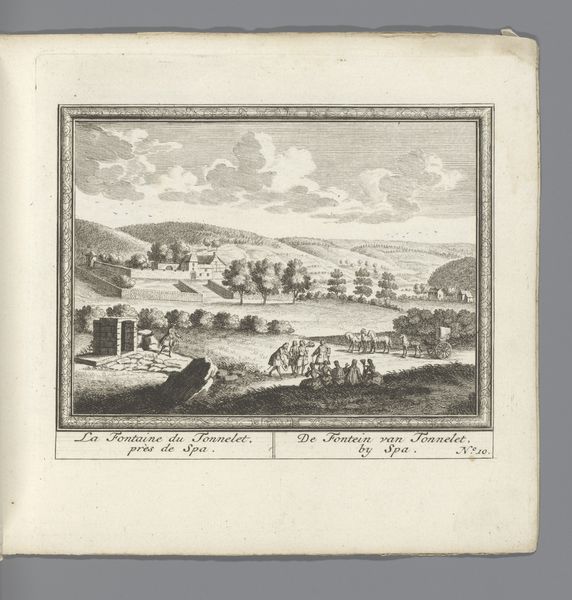
print, engraving
# print
#
landscape
#
romanticism
#
cityscape
#
engraving
Dimensions: height 98 mm, width 150 mm
Copyright: Rijks Museum: Open Domain
Curator: The piece before us, titled "Gezicht op Jena," created sometime between 1770 and 1817, offers a detailed cityscape rendered through the precise art of engraving. Editor: It evokes a sense of serene remoteness. The composition is interesting—that cluster of billowing clouds above feels almost protective, overseeing the diminutive structures below. Curator: Indeed. The artist employs a very linear technique, achieving remarkable detail, consider, for example, the textural gradation in the hills beyond the city; an approach common to prints produced during the Romanticism. This style often presents idealized versions of reality, prompting introspection regarding humanity's place within the grand scope of nature. Editor: I'm drawn to the strategic use of perspective; the placement of the buildings leading towards that church spire certainly organizes and structures the scene. Yet, the absence of human presence imbues a feeling of isolation, typical for artwork made in an era of sociopolitical uncertainty. The city seems more of an idea, rather than a lived-in space. What purpose might such rendering have had at the time? Curator: Prints were often employed for disseminating visual information across geographies, as they were relatively cheap to produce and allowed detailed depictions of architecture to travel great distances. Consider this cityscape in light of emergent nationalism within the Germanic lands at the time. It served, undoubtedly, to bolster civic identity among widely dispersed populations through visual connection. Editor: So its effect relies less on capturing historical reality, and more on producing or shaping public sentiments? Its visual impact now makes me reflect on how urban centers are transformed into emblems and their images made central to ideologies. It seems a bit detached—almost as if viewed through the prism of Romantic longing and projection. Curator: Perhaps. I think its lasting intrigue resides in that intersection of tangible and intangible qualities, technique, and atmosphere—ultimately sparking contemplative viewing. Editor: Agreed, each compositional and stylistic choice presents new layers of meaning. I like that the piece holds the weight of its past, yet continues to encourage thoughtful reflection.
Comments
No comments
Be the first to comment and join the conversation on the ultimate creative platform.
